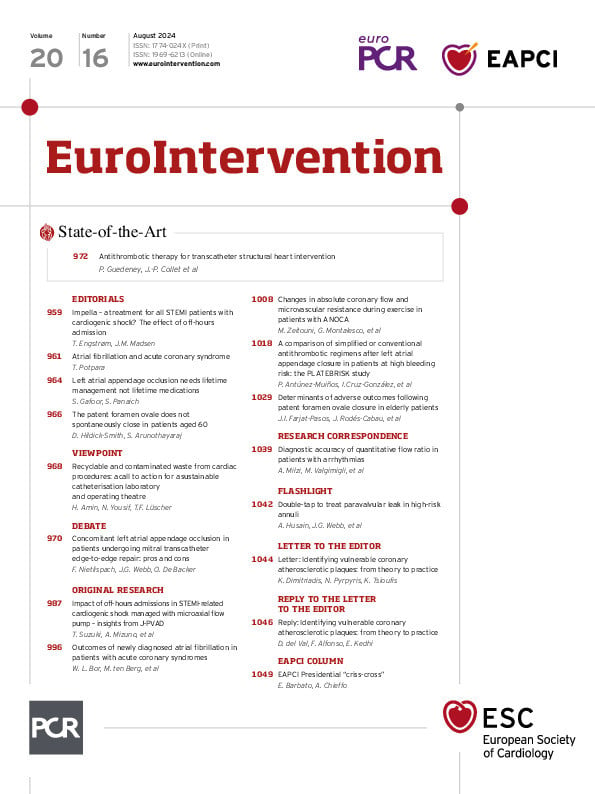Cory:
Unlock Your AI Assistant Now!
We read with great interest the study by del Val et al1 regarding the prognostic role of vulnerable plaque features in non-ischaemic lesions, showing thin-cap fibroatheroma (TCFA) as the strongest predictor of future events, with the addition of other vulnerable plaque parameters further increasing this risk. This study is of particular importance; however, several key insights must be highlighted.
Firstly, 68.4-84.4% of patients received statins, with significantly lower use in most subgroups with high-risk characteristics, compared to patients without. Furthermore, there is no report of proprotein convertase subtilisin/kexin type 9 (PCSK9) inhibitor use. It is well documented that PCSK9 inhibitors lead to plaque regression and stabilisation2. Notably, a phenotype of “triple regression” − which consists of the combined presence of (a) percentage of atheroma volume reduction, (b) maximum lipid core burden index within 4 mm reduction and (c) minimal fibrous cap thickness increase − is significantly associated with fewer adverse outcomes and independently associated with the use of PCSK9 inhibitors3. Given the prognostic significance of both vulnerable plaques and the presence of plaque regression, as well as the limited data in this context, future efforts should further evaluate if PCSK9 inhibition in patients with baseline vulnerable plaques leads to enhanced prognosis and reduction of reported adverse events.
Furthermore, despite approximately one-quarter of patients presenting with acute coronary syndrome, the investigators did not report any differences in outcomes between different presentations or whether presentation was a predictor of outcomes in patients with vulnerable plaques. Considering the inherent differences of these subgroups, it should be evaluated whether plaque vulnerability impacts patients with acute or stable disease differently, indicating alternative treatment strategies.
It has been shown in haemodynamically significant lesions that fractional flow reserve (FFR)-derived pullback pressure gradient (PPG), which discriminates focal from diffuse disease, is associated with the identification of plaque vulnerability4. Namely, lesions with high PPG (focal lesions) had a significantly higher prevalence of a higher plaque burden and TCFA. Given the nature of this study, combining optical coherence tomography and FFR, it would be interesting to evaluate whether such correlations exist in FFR-negative lesions. Identifying a relationship in future studies could provide an additional tool, along with intravascular imaging, in the identification and treatment decision-making of high-risk plaques.
The recently published PREVENT study5 showed that preventive stenting of FFR-negative vulnerable plaque, in comparison to pharmacotherapy, led to a reduction in major adverse cardiovascular events. Given the positive results, but the absence of PCSK9 inhibition in this trial, it currently remains unknown whether an intensified medical therapy or stenting would provide the most benefit to patients. The risk score provided by the investigators may introduce a novel way of selecting which lesions, and consequently which patients, should be treated with stenting and which with pharmacotherapy − evaluating both vulnerable plaque distinct characteristics and the presence of a combination of high-risk features, which, as reported, increases adverse events. Therefore, such scores should be validated and implemented in future interventional studies, aiming to find the optimal phenotype for both medical and interventional therapy in the context of non-flow-limiting high-risk lesions.
Conflict of interest statement
The authors have no conflicts of interest to declare.

